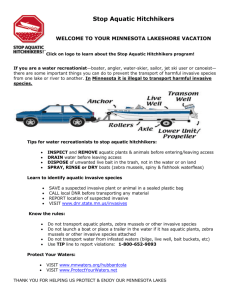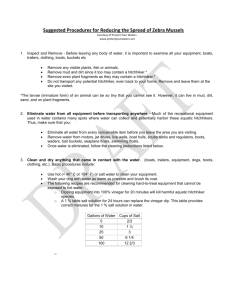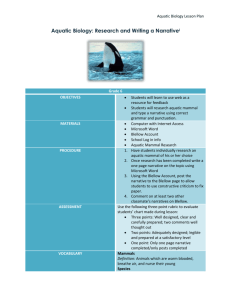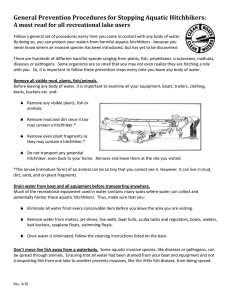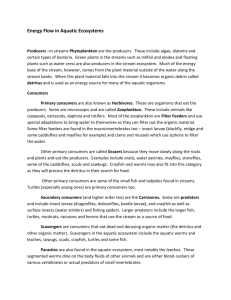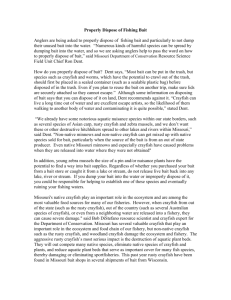Word Doc - Protect Your Waters and Stop Aquatic Hitchhikers.
advertisement
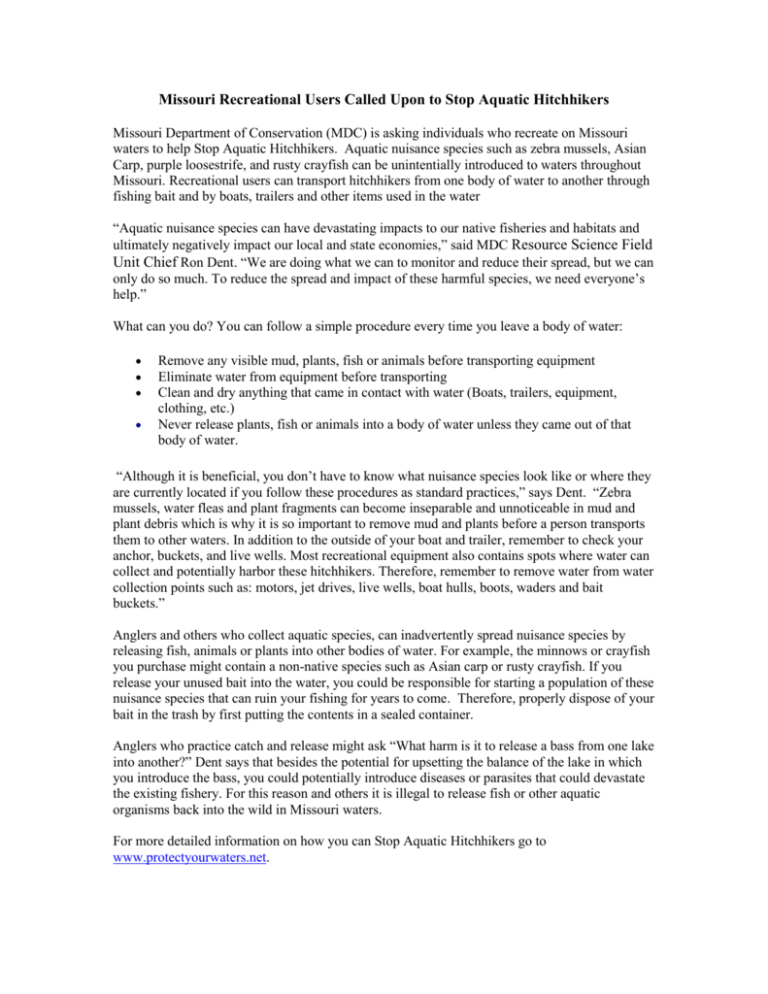
Missouri Recreational Users Called Upon to Stop Aquatic Hitchhikers Missouri Department of Conservation (MDC) is asking individuals who recreate on Missouri waters to help Stop Aquatic Hitchhikers. Aquatic nuisance species such as zebra mussels, Asian Carp, purple loosestrife, and rusty crayfish can be unintentially introduced to waters throughout Missouri. Recreational users can transport hitchhikers from one body of water to another through fishing bait and by boats, trailers and other items used in the water “Aquatic nuisance species can have devastating impacts to our native fisheries and habitats and ultimately negatively impact our local and state economies,” said MDC Resource Science Field Unit Chief Ron Dent. “We are doing what we can to monitor and reduce their spread, but we can only do so much. To reduce the spread and impact of these harmful species, we need everyone’s help.” What can you do? You can follow a simple procedure every time you leave a body of water: Remove any visible mud, plants, fish or animals before transporting equipment Eliminate water from equipment before transporting Clean and dry anything that came in contact with water (Boats, trailers, equipment, clothing, etc.) Never release plants, fish or animals into a body of water unless they came out of that body of water. “Although it is beneficial, you don’t have to know what nuisance species look like or where they are currently located if you follow these procedures as standard practices,” says Dent. “Zebra mussels, water fleas and plant fragments can become inseparable and unnoticeable in mud and plant debris which is why it is so important to remove mud and plants before a person transports them to other waters. In addition to the outside of your boat and trailer, remember to check your anchor, buckets, and live wells. Most recreational equipment also contains spots where water can collect and potentially harbor these hitchhikers. Therefore, remember to remove water from water collection points such as: motors, jet drives, live wells, boat hulls, boots, waders and bait buckets.” Anglers and others who collect aquatic species, can inadvertently spread nuisance species by releasing fish, animals or plants into other bodies of water. For example, the minnows or crayfish you purchase might contain a non-native species such as Asian carp or rusty crayfish. If you release your unused bait into the water, you could be responsible for starting a population of these nuisance species that can ruin your fishing for years to come. Therefore, properly dispose of your bait in the trash by first putting the contents in a sealed container. Anglers who practice catch and release might ask “What harm is it to release a bass from one lake into another?” Dent says that besides the potential for upsetting the balance of the lake in which you introduce the bass, you could potentially introduce diseases or parasites that could devastate the existing fishery. For this reason and others it is illegal to release fish or other aquatic organisms back into the wild in Missouri waters. For more detailed information on how you can Stop Aquatic Hitchhikers go to www.protectyourwaters.net.
